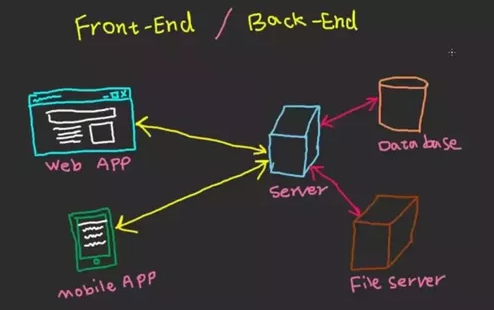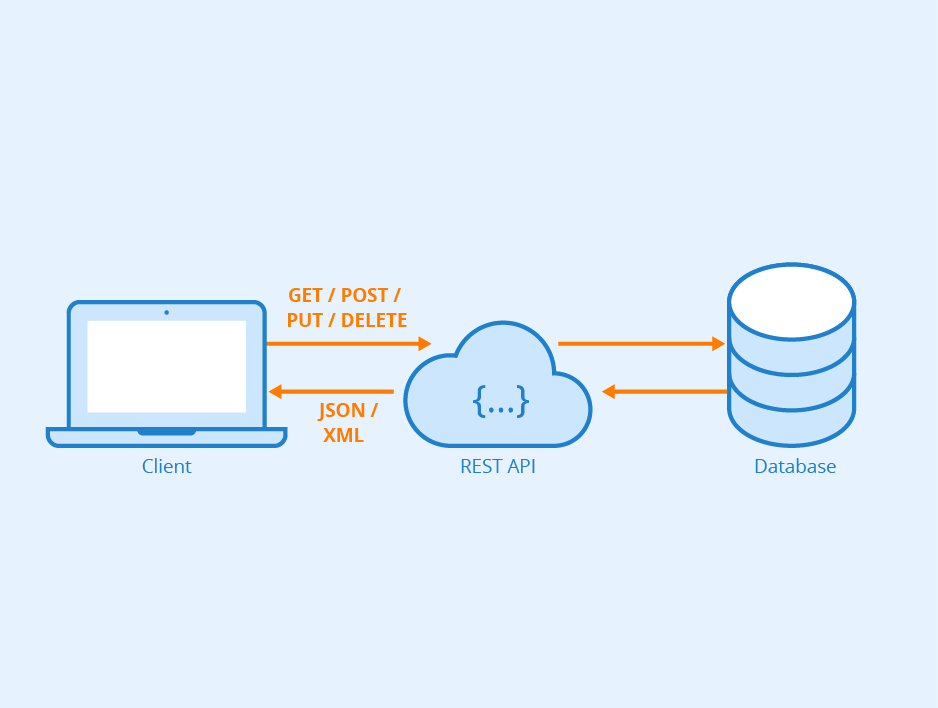The following link has a great walk through on the main topics of front-web web development. Almost each topic has a detailed tutorial, with great examples and best practices. https://www.w3schools.com/whatis/default.asp W3school.com is great platform to learn al kinds of web development languages/skills.
(Below the image are some notes on the topics)
These are the basics of front-end web development. It’s recommended to look at the full tutorials (at the end of each topic).
These are optional, good to know but not necessary to have a good understanding.
XML is optional, JSON is a better practice
Web front-end runs on HTML, CSS and JavaScript. Three languages meant for defining content, layout and behaviour of the page respectively. Content is king, and it (.html) is what you get send first when an end users browser requests a page, but it brings the layout (.css) and behaviour (.js) with it through references.
To help with on or more of these three languages you can use a front-end framework. This provide some standardisation and common functionality a front-end framework can help out with this. Either with HTML, CSS and JavaScript.
Read more on front-end frameworks
So what makes the front end of a website possible? Where is all that data stored? This is where the back end comes in. The back end of a website consists of a server, an application, and a database. A back-end developer builds and maintains the technology that powers those components which, together, enable the user-facing side of the website to even exist in the first place.
Node.js is a run-time environment that includes everything you need to execute a program (back-end) written in JavaScript.
A database is a collection of information that is organized so that it can be easily accessed, managed and updated. Computer databases typically contain aggregations of data records or files, containing information about sales transactions or interactions with specific customers.
An API is an application programming interface. It is a set of rules that allow programs to talk to each other. The developer creates the API on the server and allows the client to talk to it.
REST determines how the API looks like. It stands for “Representational State Transfer”. It is a set of rules that developers follow when they create their API. One of these rules states that you should be able to get a piece of data (called a resource) when you link to a specific URL.
Each URL is called a request while the data sent back to you is called a response.
REST API concepts and examples (youtube)
Strapi, the most flexible open-source Headless CMS/API Framework gives developers the freedom to use their favorite tools and frameworks while helping editors to easily manage their content and distribute anywhere. By making the admin panel and API easily customizable and extensible through a plugin system, Strapi enables the world’s largest companies to accelerate content delivery while building better digital experiences. Read More
Development tools and technologies.
A widely used modern version control system. Git is a mature, actively maintained open source project originally developed in 2005 by Linus Torvalds, the famous creator of the Linux operating system kernel. A staggering number of software projects rely on Git for version control, including commercial projects as well as open source.
GitHub is a code hosting platform for version control (git) and collaboration. It lets you and others work together on projects from anywhere.
If you encounter any questions or issues, leave a comment behind and I will try to help you.


